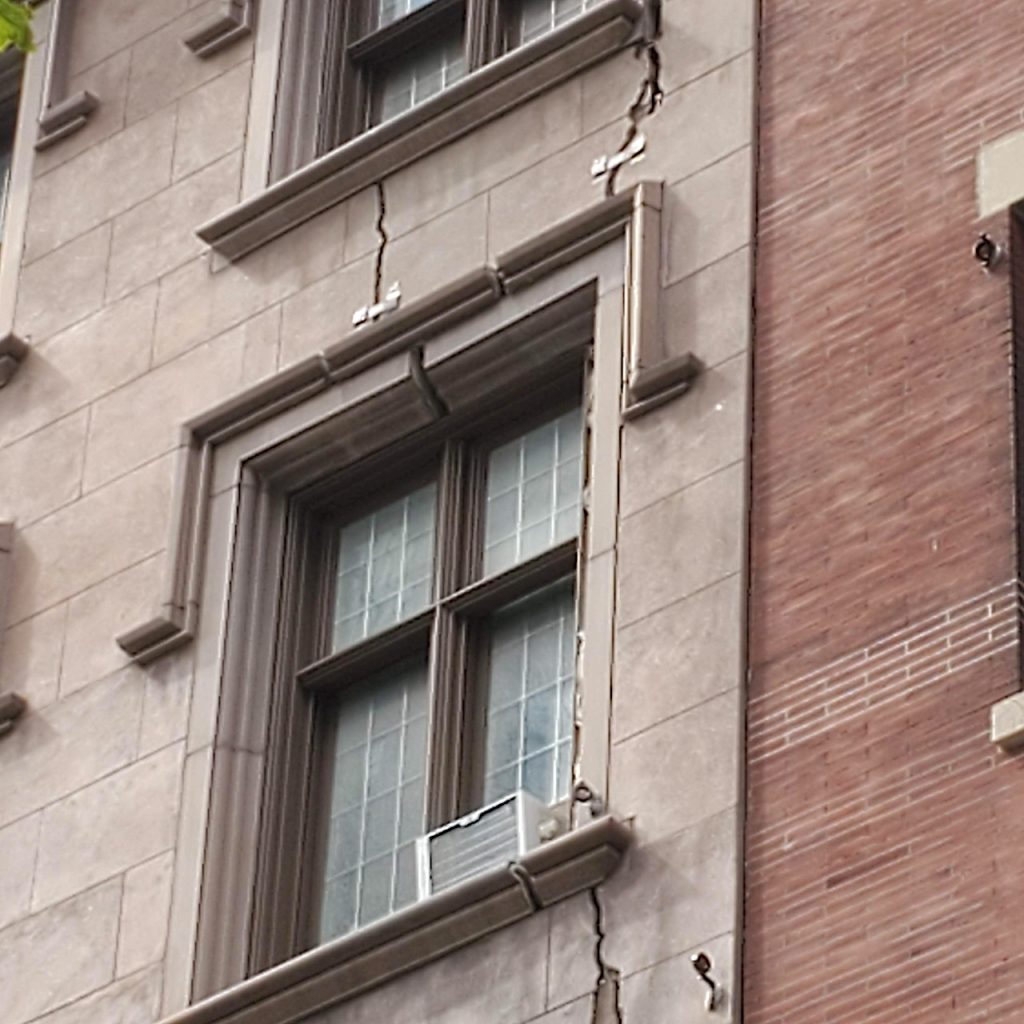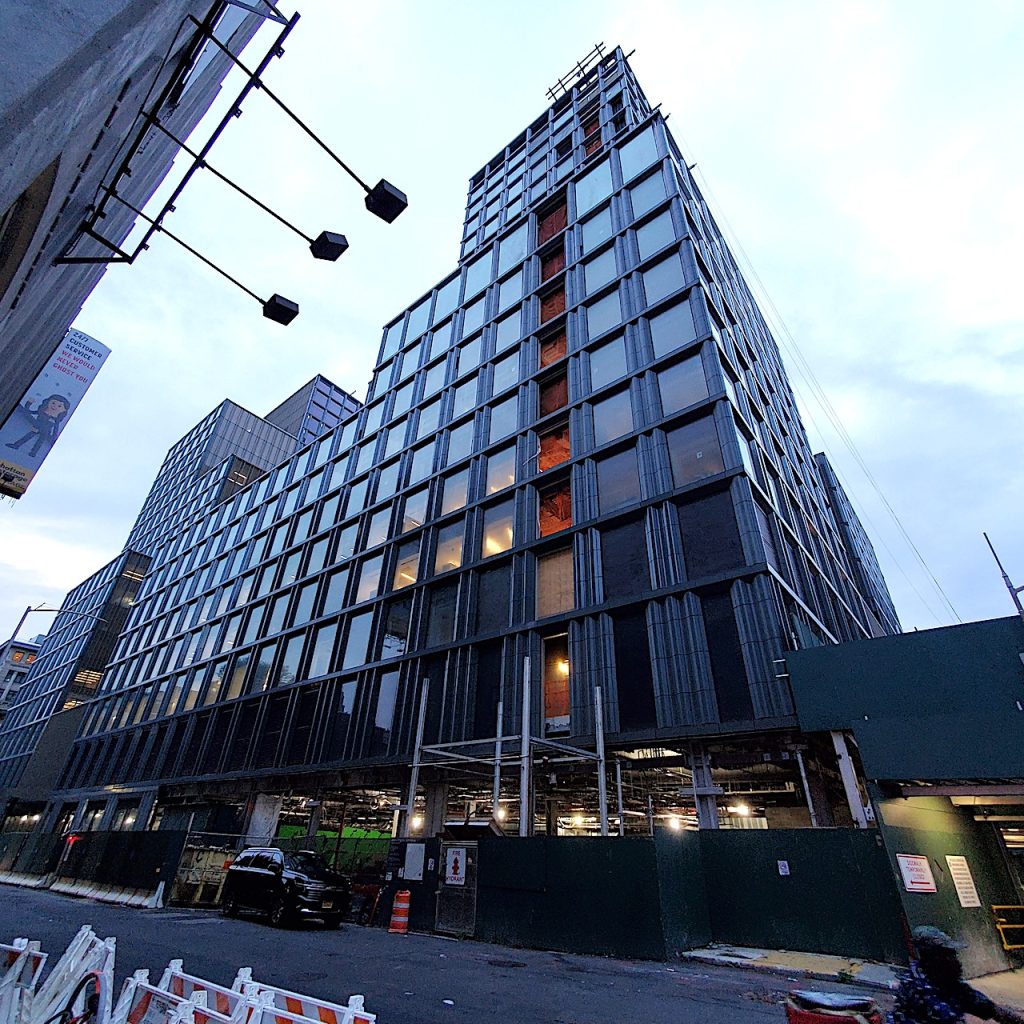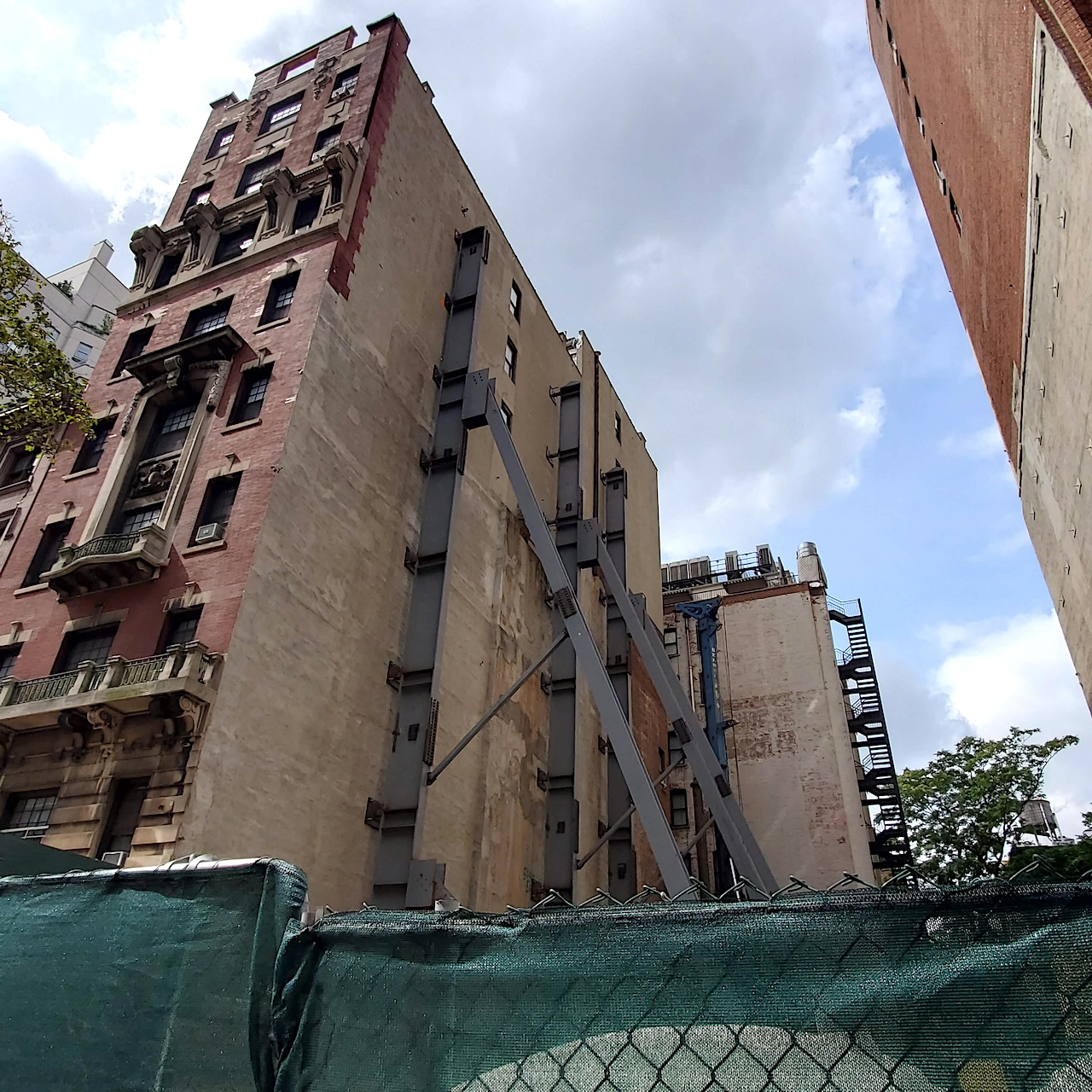BY PHYLLIS ECKHAUS | “Time To Reform Our Landmarks Preservation Commission?”
That was the question before an Oct. 18 panel at Grace Church High School in the East Village sponsored by the Bowery Alliance of Neighbors. Yet, for each of the panelists there was little question. Their answer was a resounding “Yes!”
Speaking with erudition and sometimes vehemence, panelists collectively characterized the commission as being off the rails, far afield from its mission, “captured” by the real estate lobby, and stealthily disempowering its own commissioners and professional staff.
Arguably preaching to the choir, the panel addressed a roughly 60-person audience, which included many longtime preservation advocates and even Michael Devonshire, one of three former Landmarks Preservation commissioners who were allegedly “booted” from the agency for favoring preservation.
Lynn Ellsworth, the founder of the Alliance for a Human-Scale City, organized the panel and was the first to speak. She reminded the room how the 1965 Landmarks Law that launched the commission into existence describes preservation as being in New York City’s long-term economic interest: “[T]he standing of the city as a worldwide tourist center and world capital of business, culture and government cannot be maintained or enhanced by disregarding the historical and architectural heritage of the city and by countenancing the destruction of […] cultural assets.”
The law goes on to declare historic preservation a “public necessity” promoting New Yorkers’ “health, prosperity, safety, and welfare.”
Yet, instead of taking the lead on landmarks and landmarking, the current Landmarks Preservation Commission, Ellsworth contended, is in “a state of regulatory capture,” the term that’s used for a sorry setup that happens all the time: when an agency that’s supposed to regulate an industry is gradually controlled by that industry — in this instance the real estate industry.
Ellsworth pointed to the “revolving door” moving top L.P.C. officials — specifically former Commission Chairperson Meenakshi Srinivasan and former General Counsel Valerie Campbell — directly to Kramer Levin, the real estate lobbying firm that both represents and serves on the governing board of preservationists’ arch nemesis, the Real Estate Board of New York (REBNY).
And while Ellsworth identified the problem of “regulatory capture” as going back many years, she found special fault with current L.P.C. Chairperson Sarah Carroll, whom she described as a “monarch” running the commission as a one-person show.

This alleged abuse of power has especially affected review of applications for landmarking, known as Requests for Evaluation, or R.F.E.’s, Ellsworth said. In the past, she asserted, the professional staff worked with a committee of commissioners to do triage, but now evaluation “is done by the chairperson with whatever staff the chairperson feels like inviting to the meeting. There are no minutes… . There are no procedures… . You can’t find out what’s going on” and commissioners are excluded from the process, she declared.
Panelist Frampton Tolbert, the executive director of the Historic Districts Council, echoed Ellsworth’s concern about disempowered commissioners.
“We’ve heard from commissioners who’ve had no idea about R.F.E.’s being received” by the commission, he said. He urged that a list of the R.F.E.’s be made public, and that decision-making authority be extended beyond “the chairperson and a few staff members” and returned to commissioners.
Tolbert cautioned against attempting to reform the L.P.C. by revision of the New York City Charter, suggesting that process can backfire. He also said that the Vulnerable Buildings Plan adopted by Mayor Adams’s administration has been a step forward, although the plan has not been made public or codified.
The H.D.C. head bemoaned the commission’s lack of transparency, and absence of clear standards, for example, with regard to landmarking for cultural significance. Tolbert cited as “arbitrary” the commission’s refusal to designate the Janta House, once home to a famous and beloved Polish freedom fighter. The now-demolished 109-year-old Queens home had passionate support from elected officials and the community.
Tolbert also advocated legislative reforms that would give the city increased leverage against the derelict owners of vacant, deteriorating landmarked buildings.
Panelist Jeremy Woodoff, who was on the commission’s staff as deputy director of preservation from 1980 to 2000, drew a stark portrait of how much the commission has changed since his tenure.
He recalled that during his time, L.P.C. professional staff held considerable sway. For example, each permit application to alter a landmark was reviewed by the staff, which reached consensus on recommendations. Those recommendations “were not edited, they were not overruled, they were not changed by upper management or by the chairperson… . Commissioners had the unvarnished recommendations of the professional staff.”
He noted that the commission would often take on a leadership role in order to mitigate adverse effects on historic buildings, with the authority to tell other city agencies what to do.
It’s L.P.C. leadership, Woodoff noted, that pushed the Department of Transportation into preserving cobblestone streets and compelled the Parks Department to preserve its legacy from Frederick Law Olmsted.
“No city agency wanted to be seen as defying the Landmarks Commission,” he remarked. Today, though, he observed, the L.P.C. is so deferential to other city agencies that it has “thoroughly abdicated” its oversight of scenic landmarks.
Panelist Michael Hiller, an attorney who has successfully sued the L.P.C., sought to frame the big picture. And, in his telling, that picture shows preservationists facing profound disadvantages.
“Real estate developers control municipal government,” he stated. “They own the Mayor’s Office and most of the [City] Council, and they own them because they hire well-paid lobbyists and they donate millions of dollars to the political campaigns of those who ultimately make the laws we live under.
“How bad is it?” he asked rhetorically, before answering, “I would say today if the Landmarks Law were up for adoption it would not pass […] precisely because developers own the city […] in particular, the L.P.C.”

Second, he asserted, the legal system forcefully disavows this reality.
“The way it works in New York is that the courts and the law operate under the fiction that the Landmarks Preservation Commission is an apolitical agency, overseen by disinterested, independent technocrats who are immune from political influence,” he explained. “And I say this to you with a straight face […] this is what the courts believe.
“As a consequence,” Hiller continued, there is only one way to successfully challenge an L.P.C. decision in court: One must show that the commission “clearly violated well-established law or procedure or issued a decision that is completely and totally irrational.”
Given these “exceptionally high standards,” Hiller observed, “more people have walked on the moon than have beaten the Landmarks Preservation Commission.”
These disadvantages brought Hiller to his last point: that preservationists are arguably responsible for the mess they’re in because they have yet to unite into a political force that can challenge developers.
“We need to infuse the political system with the money,” he said. “That’s necessary to influence the outcomes so that we can get commissioners on the commission… . We need to find candidates who will support preservation.
“We need people who care about the size of buildings!” the attorney exclaimed. “Right now it looks like a bunch of giraffes sticking up in the middle of our skyline… . That’s not New York!”
Panelist Kerri Culhane, an architectural historian who has worked with many community groups, emphasized that neighborhood groups need a voice in the preservation process, and perhaps on the commission itself.
Culhane also argued that preservationists need to do a much better job of articulating “the many co-benefits of preservation,” among them, mitigating climate change. New construction, in contrast to preservation, generates significant carbon emissions and waste, she noted.
Another potential co-benefit to preservation, Culhane declared, is affordable housing. She pointed out that the L.P.C.’s approval of a luxury tower on Lower Fifth Avenue not only reduced the affordable housing at that address, it destabilized and forced the evacuation of adjacent buildings with rent-regulated tenants.
Better messaging, she said, means describing what is lost when a historic building is demolished and replaced.
Culhane recounted walking through “the hollow void” of what was recently the Hotel Pennsylvania, and being struck “not only by the volume of air that exists now” but the volume “that is in rubble in a landfill somewhere right now. And what’s going to replace it? It is going to be an energy-inefficient, bird-killing machine that has no feeling of a real, solid building.”
The last panelist was Michael Kramer, the director of the Seaport Coalition, which is in court seeking to overturn the commission’s approval of the 30-story Howard Hughes Corporation tower within the low-scale South Street Seaport Historic District.
As reported in The Village Sun, coalition volunteers used the Freedom of Information Law to obtain 3,000 L.P.C. e-mails, then combed through them to discover that the commission met 50 times or more with the developer. According to the coalition, a secret deal was proposed that would allow the tower in return for HHC’s support for the South Street Seaport Museum.
The coalition says the commission actually held a mock hearing to coach HHC on how best to make its case.
In a great victory, the coalition won at the trial level. But in June, an appeals court reversed the lower court’s ruling.
“The new normal allows developers to engage in backroom dealings…while the courts look the other way,” Kramer said.
The Seaport Coalition has asked the state’s top court, the Court of Appeals, to hear its appeal.
Asked about follow-up to the panel, Ellsworth told The Village Sun that she will be talking to Alliance for a Human-Scale City members about launching a pro-preservation political action committee.
“Time someone stood up to REBNY!” she declared.


I want to echo previous comments about the excellent reporting in this article, and appreciation for putting the cynicism and self-dealing here into the light.
Excellent reporting. How does this story get to a wider audience?
Well, it’s up to other media to pick up on the story if they want to. Some of them do read the Sun.
Thank you all for your important work here!
Thanks for this important story illustrating the Landmarks Preservation Commission no longer supports its core mission. How very sad for the neighborhood and the city.
Very important article. Sadly, the way our political system is designed, many of our elected officials have had large donations from real estate during their campaigns. Eric Botcher received big money from real estate and I believe that our state senator, Brad Hoylman-Sigal, used to be a real estate lawyer. I find both of these men likable but they owe their allegiance to real estate.
Of all the building that has taken place during the last 40 years in Downtown Manhattan, Botcher insists on building affordable housing on the two spots promised for parkland, the Elizabeth St. Garden and the water tunnel site at 388 Hudson St. Why wasn’t affordable housing included in any of the other developments or in future developments that are not on our parkland? Because there is still real estate money to be made, so our elected officials help real estate steal the desperately needed parkland that was promised to the community.
Downtown has the least amount of real parks and tree canopy in all of NYC. The new building planned for 388 Hudson will cast a shadow in what used to be the only real park in the West Village (JJ Walker, which has been artificial-turfed and excluded from the larger community for league sports use.)
The Hudson River park is a tree-lined 30-foot-wide strip of grass along a noisy, six-lane highway, where the lawn is used as a bathroom in the evening when the bathrooms are closed. The rest of what are called parks or green space are gardens, at best, where people are not allowed on the grass. That leaves us with zero natural parkland.
Instead of allowing us to have our park, Botcher came up with a plan to put trees in sidewalk pits and on roofs. The city doesn’t take care of the trees lining the streets we have now, so his plan is a waste of taxpayer dollars — a farce if it wasn’t so injurious. It is estimated that eight trees are required for every person in order to have fresh air, so the people lose out again.
thank you lynn, thank you bowery alliance of neighbors, thank you village sun…..for this wonderful piece on the egregious state of the nyc lpc.
hope this spotlight helps!!
Well done, Phyllis!
Excellent report on this important panel, especially for those of us who missed it. Thanks to Phyllis Eckhaus and the Village Sun!
And thanks to David Mulkins of Bowery Alliance of Neighbors for being the true instigator of this panel!
Thanks Village Sun for writing this up!
Thank you! Nice job by Phyllis!